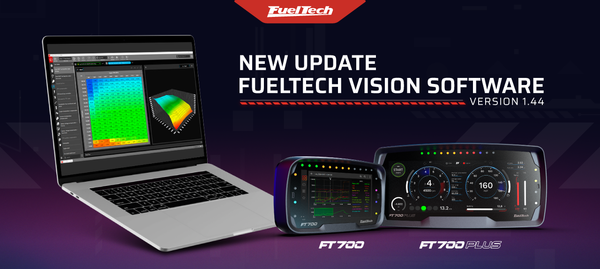An entire new line-up of go-fast fun has been opened with FuelTech forging its way into the jet ski market. Coming off the release of several plug-and-play kits for Yamaha and Sea-Doo models, Anderson Dick gives a look into a wild new project at FuelTech USA. A Yamaha SVHO 1.8L four-cylinder supercharged engine is getting enhanced with the addition of a turbocharger, creating a unique compound boost application.
Compound Boost | Yamaha SVHO Jet Ski| Garrett Turbo
Compound boost isn’t a new concept in the automotive world and FuelTech has had a few cool applications on its Mainline Hub Dyno. We’ve watched a couple of Pro Import cars produce 2,000 hp using compounded turbochargers. The Yamaha application in this video is slightly different as the compound boost is created by a turbocharger blowing into a supercharger. Anderson walks through the intricate application and explains its virtues as well as proper turbo sizing to create the most efficient and powerful package.
The factory supplied HKS centrifugal supercharger, driven by a jackshaft that is connected to the crankshaft, produces 12 psi at 8,000 rpm in stock form. The stock engine is rated at 250 hp. For this application, Anderson says they’ve modified the supercharger system for durability and push the engine rpm up to 10,000, creating 14 psi of boost in the manifold. Instead of discarding the supercharger or resorting to new impellers for greater pressure multiplication, the team added a Garrett turbocharger with the goal of making 1,000 hp.
FuelTech retains the supercharger because the engine is only 1.8L and it isn’t nearly powerful enough in naturally aspirated form to turn a turbo efficiently to create that kind of power. Anderson shows several turbo compressor maps to illustrate the surge potential of a turbo-only application. By retaining the supercharger and going with the larger Garrett G42 1450 turbocharger, the turbo runs perfectly in the middle of the compressor map—far away from the surge and choke points—and can produce the desired 1,000 hp goal.
Anderson goes on to explain how the compounding works; essentially the Garrett turbocharger feeds 14 psi of boost to the supercharger, which then compresses it more and the manifold sees over 40 psi. If they increase the turbocharger output to 30 psi, the manifold registers 73 psi once the HKS centrifugal supercharger does its job. Without the help of the supercharger, the engine isn’t nearly efficient enough to turn a turbo that size, let alone hard enough for that kind of boost pressure. Additionally, the turbocharger is only generating 30 psi of boost and the backpressure remains 1:1, helping it be efficient on the compressor map. The turbocharger is controlled by an electronic wastegate.
The plug-and-play FuelTech harness allow the addition of an FT550 or FT600 engine management system to the Yamaha engine, giving the user full control. All PowerFT ECUs include sequential injection and ignition, O2 closed loop, Data Logger, Delay Box, and a Pro Nitrous controller for those who want chemical horsepower addition. Adding a FuelTech to your jet ski will also allow a flex fuel option, enabling the engine to run on pump gas, race gas, ethanol, or methanol. The addition of a Nano O2 sensor provides information for the computer and allows the user to make informed decisions on tuning.
Since this is new to the jet ski market, FuelTech has added many classes to its FT Education program. The curriculum is designed for casual enthusiasts to high-level builders that want to learn more about the PowerFT ECU. It is a classroom-driven and hands-on program taught by educators and technical service representatives and anyone can sign up.
From championship winning Pro Modifieds in the pro ranks of NHRA to the local bodies of waters where jet skis provide pure enjoyment, there is a reason you’re seeing #FuelTechEverywhere
Also in FuelTech Blog

FuelTech Acquires Velopark Racetrack, Ushering In a New Era of Brazilian Motorsports

FuelTech FTManager Update 5.5 | PowerFT ECU





